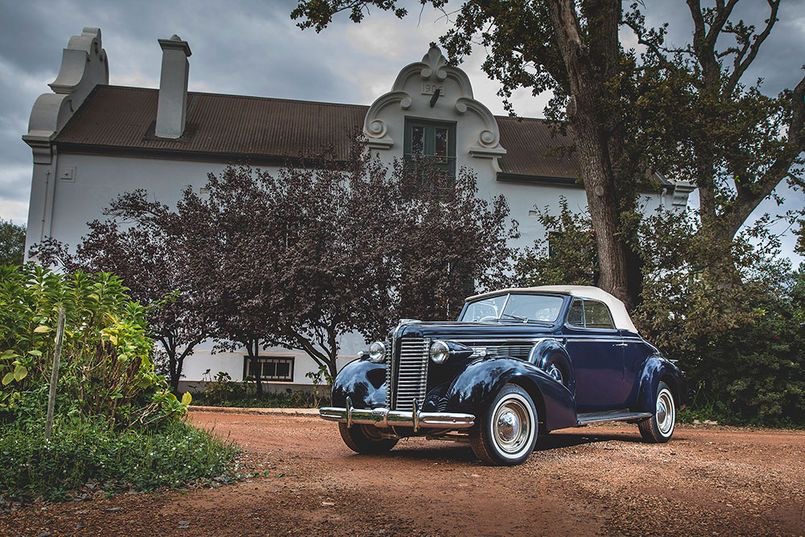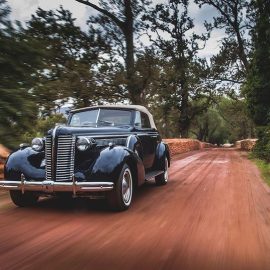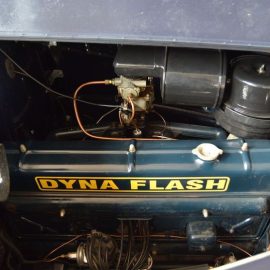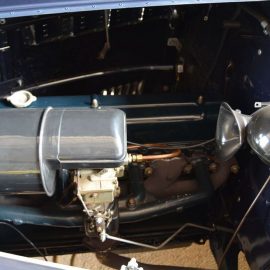
02 May Spanner Works
A look at some of the recent activities that have been taking place in FMM’s workshop.
FMM’s Buick Series 40 Special is a 1938 Convertible Coupé (style number 46C), one of eight body styles on offer at the time – and one of the rarest, as only 2 473 were produced out of 130 838 Specials built during the model year. It certainly is an attractive, flowing design with some interestingly detailed brightwork, and this car’s dark blue paintwork topped by a beige fabric hood adds a touch more elegance and it has the optional spare wheel carrier in each front fender.
This particular car was recently taken on an exercise run and found to have a peculiar flat spot when accelerating. The Buick was put on the workshop’s work schedule and Wenstley Wicomb was assigned to attend to the problem. Wenstley used some of his specialist problem solving techniques to check whether the issue was in the ignition system, fuel system or in the valve timing. Once the process of elimination was completed, Wenstley concluded that the carburettor was in need of a major clean and rebuild. He proceeded with disassembly, cleaning and making new gaskets for it. He also made a new Hypalon diaphragm. Wenstley also found the choke linkage to be faulty, which was causing the choke butterfly to remain closed. This was the most likely cause of the flat spot during acceleration. He then serviced the car with new lubricants and filters, and checked and adjusted the spark plug and contact point gaps to the specified 0,035 inch and 0,016 inch, respectively. Wenstley then took the Buick for a test drive on the estate and all was good and the car ran smoothly.
For the more general story on this car, logon to: https://www.fmm.co.za/collection-in-action-buick/
On the weekly exercise schedule, Casey and Wenstley have been starting up and riding some of the display motorcycles. One of them, the BMW R100RS, started and ran in the loop in front of the display halls at FMM to get all the fluids moving and warmed up. While riding, Casey found that the carburettors were not 100% synchronized. It was a simple enough job to quickly attend to on the day and on location, so Casey took the time to show Wenstley how to synchronize the carbs properly. Once completed, they took the R100RS for another spin around the loop and both of them could feel the difference. These little maintenance items are very important, because if they are not attended to over time, it becomes more and more difficult to diagnose issues that arise as a result.






